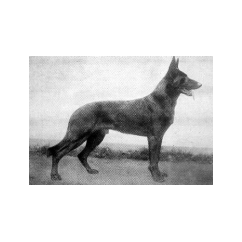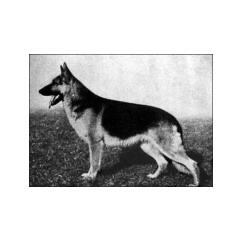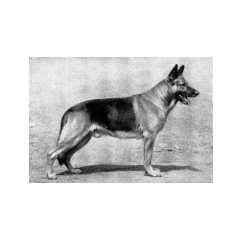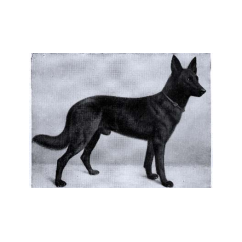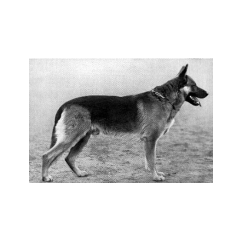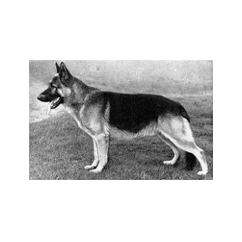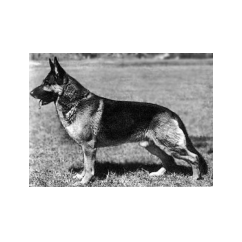GSD History
In Europe during the 1800s, attempts were being made to standardise breeds.The dogs were bred to preserve traits that assisted in their job of herding sheep and protecting flocks from predators. In Germany this was practiced within local communities, where shepherds selected and bred dogs that they believed had traits necessary for herding sheep, such as intelligence, speed, strength, and keen senses of smell. The results were dogs that were able to perform admirably in their task, but that differed significantly, both in appearance and ability, from one locality to another.
To combat these differences, the Phylax Society was formed in 1891 with the intention of creating standardised dog breeds in Germany. The society disbanded after only three years due to ongoing internal conflicts regarding the traits in dogs that the society should promote; some members believed dogs should be bred solely for working purposes, while others believed dogs should be bred also for appearance.While unsuccessful in their goal, the Phylax Society had inspired people to pursue standardising dog breeds independently.
Max von Stephanitz(please click), an ex-cavalry captain and former student of the Berlin Veterinary College, was one such ex-member. He believed strongly that dogs should be bred for working.
In 1899, Von Stephanitz was attending a dog show when he was shown a dog named Hektor Linksrhein. Hektor was the product of few generations of selective breeding and completely fulfilled what Von Stephanitz believed a working dog should be. He was pleased with the strength of the dog and was so taken by the animal's intelligence and loyalty, that he purchased it immediately. After purchasing the dog he changed its name to Horand von Grafrath and Von Stephanitz founded the Verein für Deutsche Schäferhunde (Society for the German Shepherd Dog). Horand was declared to be the first German Shepherd Dog and was the first dog added to the society's breed register.
Horand became the centre-point of the breeding programs and was bred with dogs belonging to other society members that displayed desirable traits. Although fathering many pups, Horand's most successful was Hektor von Schwaben. Hektor was inbred with another of Horand's offspring and produced Beowulf, who later fathered a total of eighty-four pups, mostly through being inbred with Hektor's other offspring. In the original German Shepherd studbook, Zuchtbuch fur Deutsche Schaferhunde (SZ), within the 2 pages of entries from SZ #41 to SZ #76, there are 4 Wolf Crosses. Beowulf's progeny also were inbred and it is from these pups that all German Shepherds draw a genetic link. It is believed the society accomplished its goal mostly due to Von Stephanitz's strong, uncompromising leadership and he is therefore credited with being the creator of the German Shepherd Dog.



